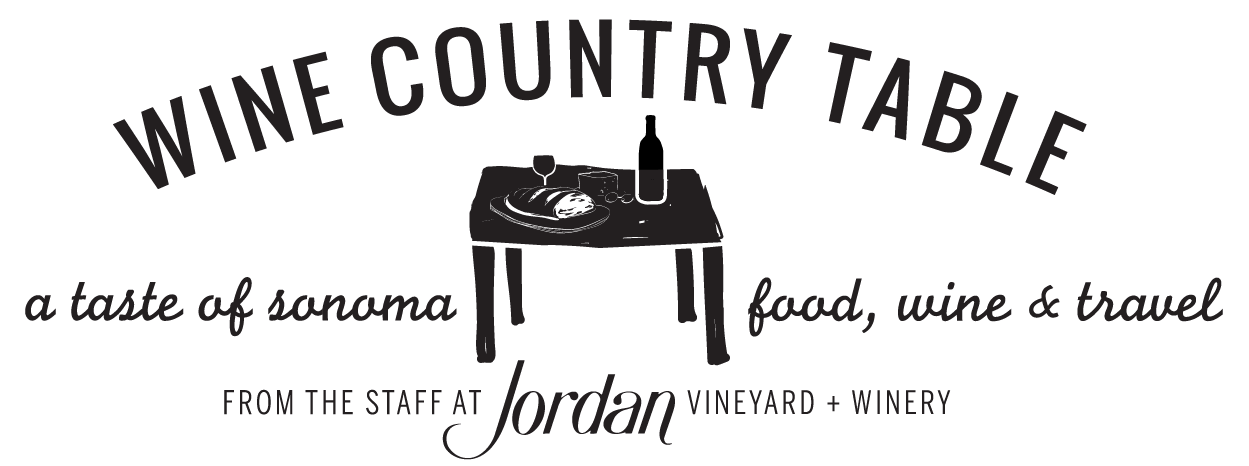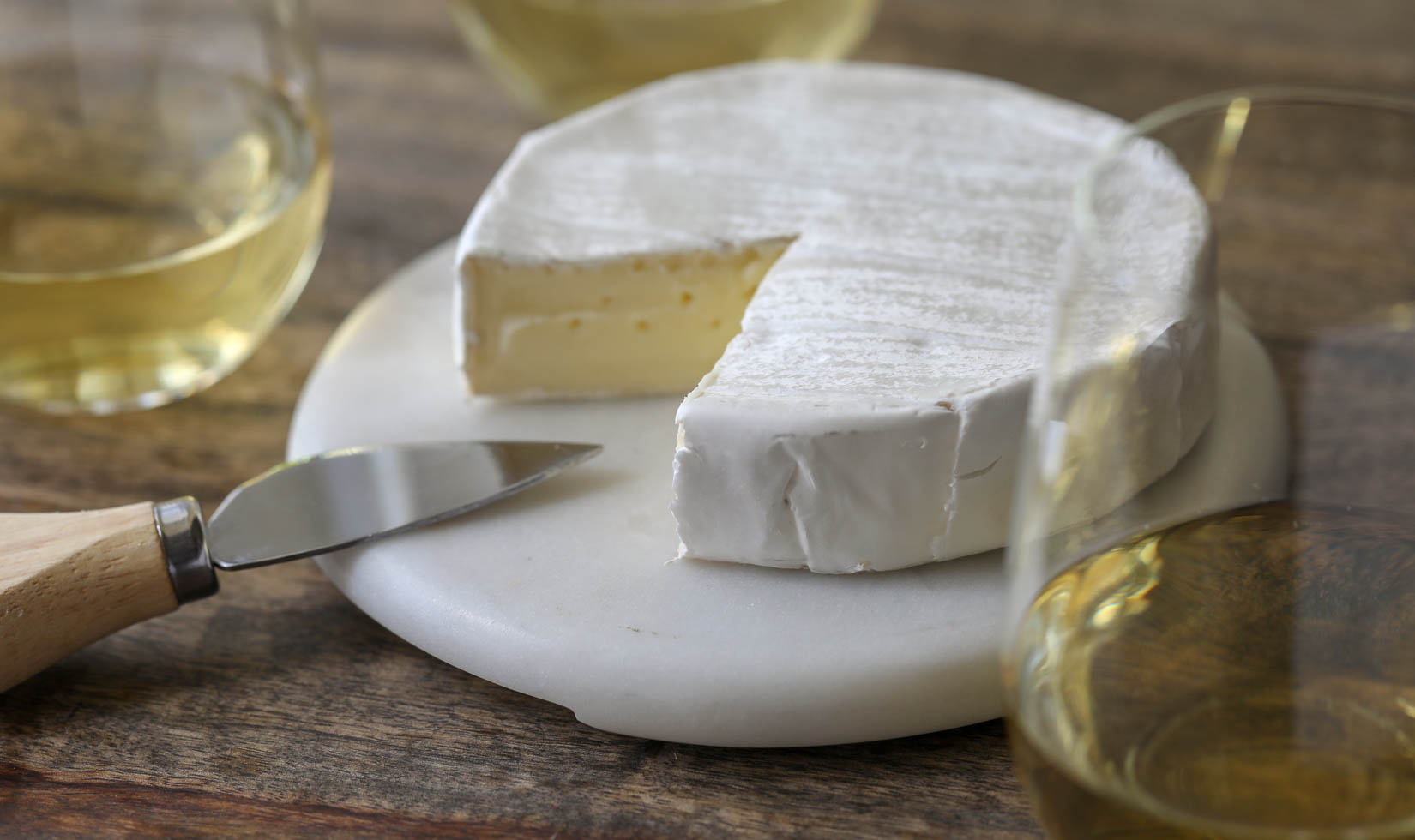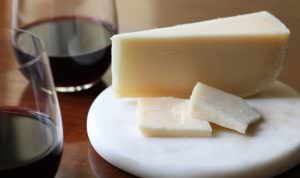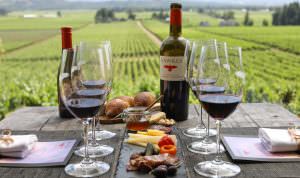Chardonnay Cheese Pairing Tips: Selecting the Best Cheeses for the Queen of White Wines
Your definitive guide to the best chardonnay cheese pairing, no matter what style you like
Summer is upon us, which means our glasses will be filled with white wine much of the time. It also means our tables and picnic baskets will be filled with cheese. So what better to go with cheese than white wine? What, you say? White wine? You bet. Chardonnay even. Read on to uncover the best chardonnay cheese pairing for many different styles of this popular varietal.
Conventional pairing wisdom used to be to pair red wine with cheese–always. That’s because in Europe, cheese was traditionally served after a meal, when there might be red wine left over. It still is. But red wine often has big oak and skin tannins, and in the presence of cheese, get even more pronounced. (Our Best Cabernet Sauvignon Cheese Pairings post dives into this topic.)
Enter chardonnay. In general, this exalted grape has several inherent cheese-friendly characteristics, such as a fuller body (compared with most other white wines), good acidity, discernible fruit, and depending how it’s made, creaminess. Sure, it’s also sometimes buttery and oaky, which, like bigger red wines, make those styles of chardonnay harder to pair. But as we learned in a recent tasting, there is an ideal chardonnay cheese pairing for almost any style.
For this tasting, we asked nationally known cheese expert and author Laura Werlin to guide us through an exploration of pairing different cheeses with different styles of chardonnay wines. Members of the Jordan Winery winemaking, marketing and hospitality staff also joined the tasting, hosted at the San Francisco Cheese School. We had gathered six chardonnays, while Werlin brought in no fewer than 18 cheeses. We were, after all, seeking definitive truths about the ideal cheese and chardonnay pairing. The wines, in order of tasting, were these:
2012 Jordan Chardonnay, Russian River Valley, $36
2016 Jordan Chardonnay, Russian River Valley, $33
2015 Chablis Grand Cru Blanchot Guy Robin Burgundy, $65
2012 Bouchard Meursault Les Clous Burgundy, $60
2012 Rombauer Chardonnay, Carneros, $43
2016 Rombauer Chardonnay, Carneros, $20
For those unfamiliar with French wine regions, the predominant grape in Burgundy is chardonnay. The Rombauer wines are from Napa, while of course the Jordan chardonnays are from the relatively cooler region in the Russian River Valley in Sonoma. This meant our tasting encompassed a variety of styles, regions, and winemaking styles. (You can find where to buy these wines on the links above.)
The cheeses ran the gamut from soft and creamy to semi-hard and were made from goat, cow, and sheep’s milk (in some cases, mixed together). Most came from California, but we had a few from Europe as well as other parts of the United States. More on those below.
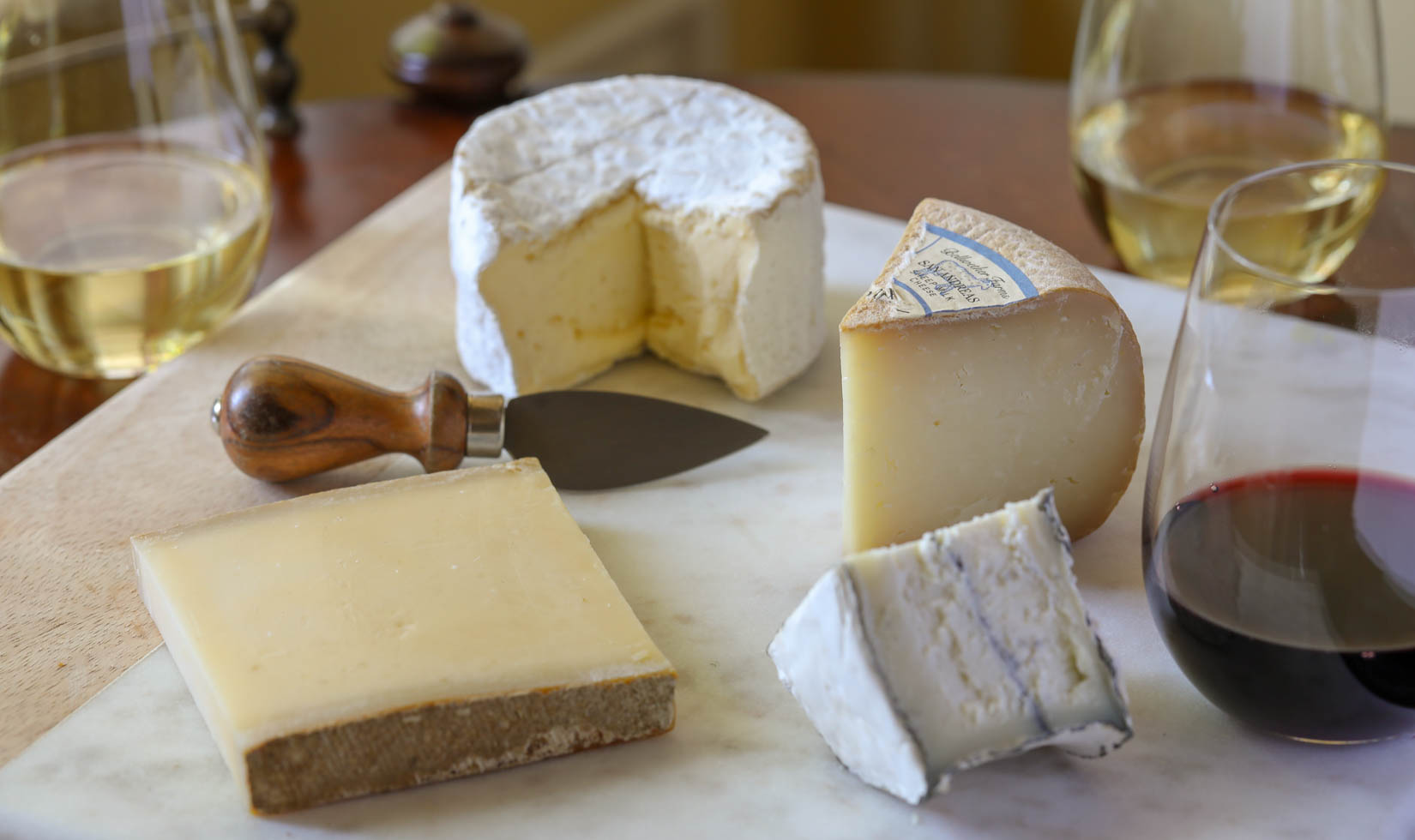
General Wine and Cheese Pairing Tips
Before getting started, it’s important to know a few general things about wine and cheese pairings–white, red or otherwise–going in, according to Werlin:
- Look for textural similarities between the wine and cheese. If a cheese is heavy or dense, it is less likely to go with a light and breezy wine. Why? The wine is almost certainly going to get lost in the presence of the big cheese (ahem).
- Creamy, buttery cheeses are more challenging to pair with oaky wines, particularly current or recent-vintage ones. Consequently, your best cheese bet for these wines, whether white or red, is semi-hard cheeses such as cheddar, Comté (from France), and mild sheep’s milk cheeses. Avoid salty ones.
- Always taste the wine before you taste the cheese. Cheese has a much bigger impact on the flavors and aromas in wine than the other way around.
- When pairing so called soft-ripened cheeses (think Brie and other similar cheeses with that distinctive “bloomy” white rind), be aware that the rind can affect the perception of the wine. Depending on how salty the rind is and whether it is ammoniated (literally smells like ammonia because it’s reaching the end of its cheese life), the rind can negatively affect the wine. However, if the rind isn’t strong, then it can sometimes enhance the fruit and other flavors in the wine. The best thing to do is taste, taste, taste.
- In order to get the full flavors from cheese and white wines, the cheese should be served at room temperature (around 68˚F) while the wines should be allowed to warm up to between 50˚F – 55˚F after being taken out of the fridge.
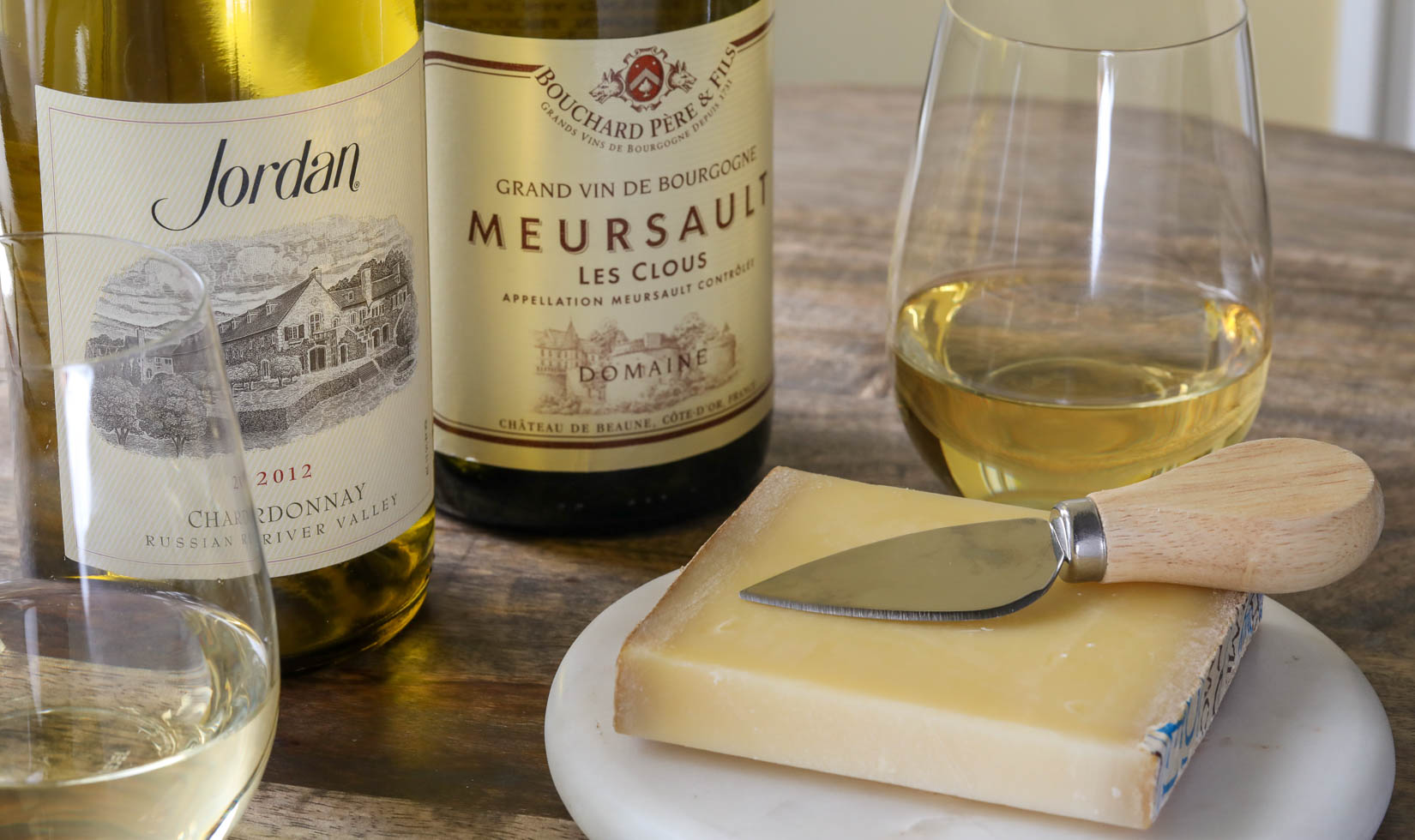
Chardonnay Cheese Pairing Guidelines
As we went through our tasting, we began to see patterns emerge. With that, we came up with general guidelines for how to match different styles of chardonnay with their best cheese companions.
- Higher-acid, balanced oak chardonnays pair with creamy, high-acid goat cheeses. Examples are fresh goat cheese, Humboldt Fog, and Pennyroyal Laychee.
- Medium-bodied, high-acid, balanced fruit, mineral, and balanced or no oak chardonnays pair with creamy OR semi-hard cheeses that themselves are well balanced – i.e. not too salty and not too tangy. Good bets are Pennyroyal “Laychee,” (or any high-quality fresh goat cheese), Bellwether Farms’s “San Andreas,” La Tur (an Italian mixed-milk creamy cheese — preferably without the rind), Marin French Cheese Company “Supreme” and the Swiss cheese called Challerhocker.
- Riper, richer, more fruit-forward, balanced-oak chardonnays make a wonderful match with rich, buttery triple-crèmes, but avoid the heavily oaked ones. Good cheese options are Marin French Cheese Company “Supreme,” Cowgirl Creamery “Mt. Tam,” and the French cheese, Brillat-Savarin.
- With rich and oaky chardonnays, pair a balanced (not too salty) semi-hard cheese. Good choices are Bellwether Farms “San Andreas” and Cypress Grove “Lamb Chopper.” Both of these happen to be sheep’s milk cheeses, which tend to be richer. A not-too-strong tangy and creamy blue cheese such as Point Reyes Farmstead Cheese Company’s Original Blue can act as an interesting counterpoint to the richness of these wines. But be careful with blue cheese. A strong and/or salty one can overpower a white wine, no matter how rich and full that wine is.
Putting It All Together: Our Chardonnay Cheese Pairing Favorites
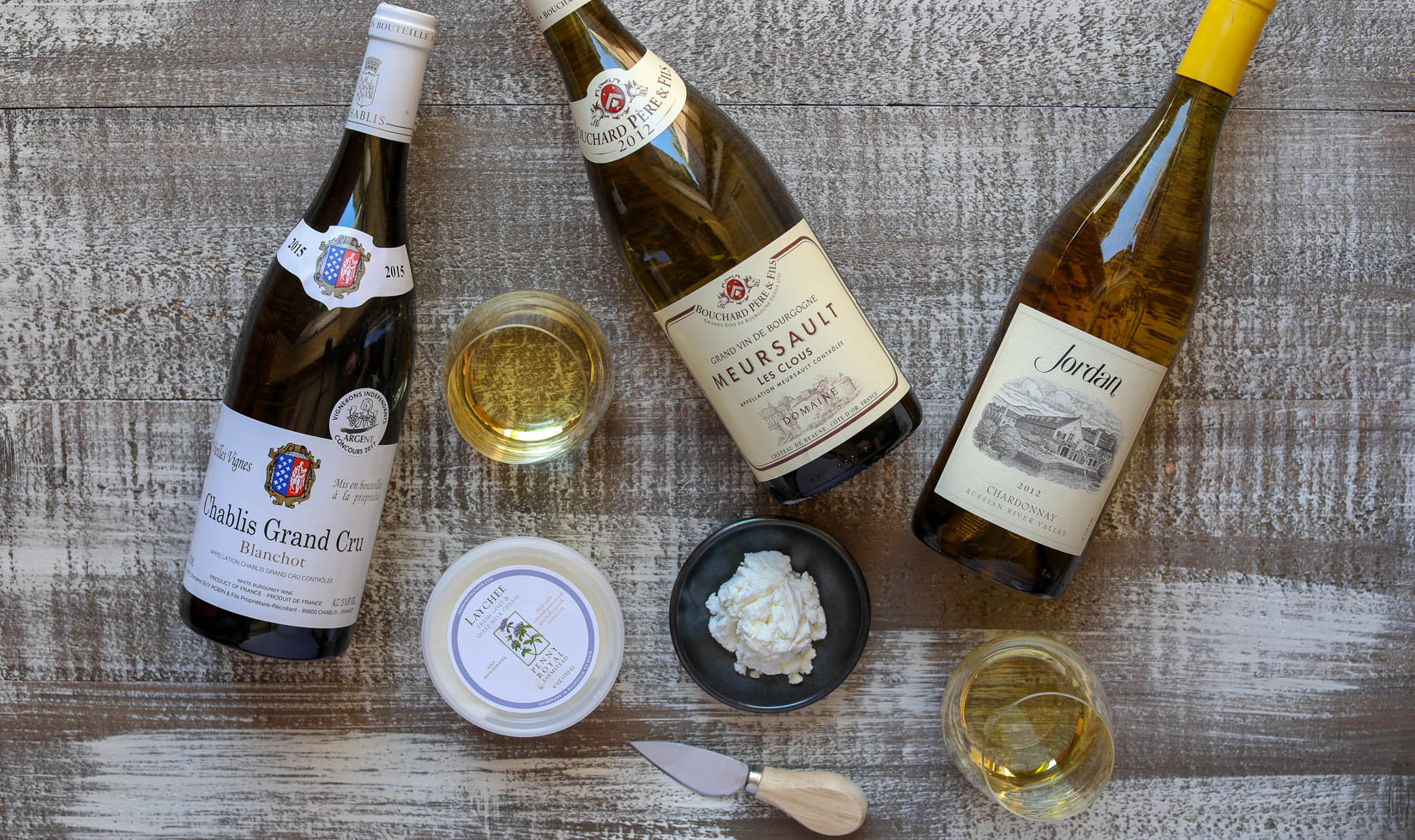
Pennyroyal Farm Laychee (Boonville; pasteurized goat’s milk; fresh)
Description: A soft and fluffy fresh-style pasteurized goat’s milk cheese with lemon and fresh cream flavors.
2012 Jordan Chardonnay: We loved the textural similarity between the cheese and wine. The creamy cheese was light enough to go with the lighter-style yet creamy mouthfeel of the wine.
2015 Chablis Chardonnay: This made for a light caramel almost sweet pairing. Said one enthusiastic taster, “The wine and cheese love each other.”
2012 Meursault Chardonnay: We were smitten by the richness and flavor of this combination. Plus, both the cheese and wine stayed in balance.
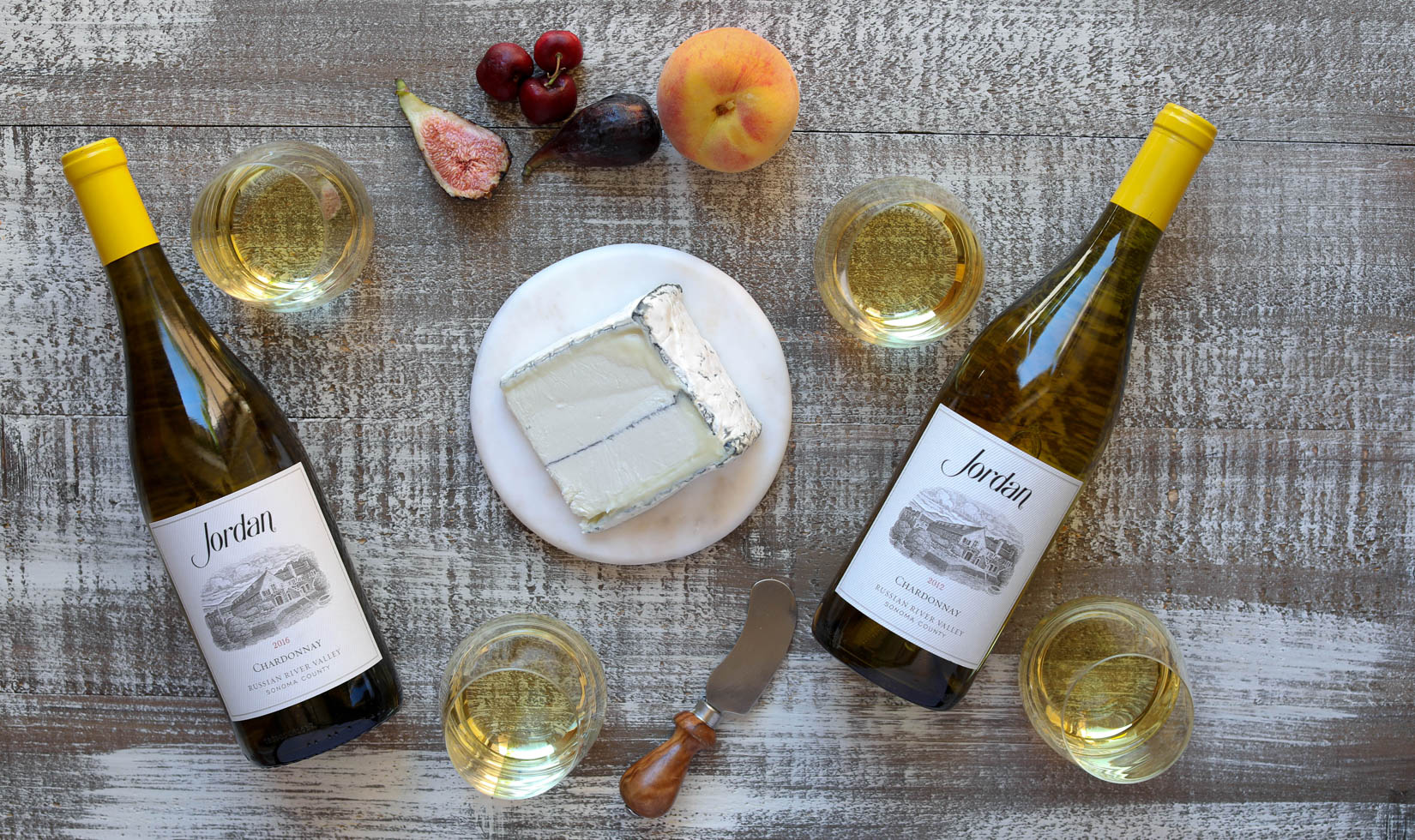
Cypress Grove Humboldt Fog (Arcata, CA; pasteurized goat’s milk).
Description: Tangy, lemony, a little earthy, a little buttery, with a creamy/chalky texture.
2012 Jordan Chardonnay: Once again, we loved the textural similarity. The medium-weight wine was the perfect complement to the medium-weight cheese. The slight tang of the cheese also played well with the acid in the wine.
2016 Jordan Chardonnay: We called this pairing a slam-dunk. Both the cheese and wine stayed in balance from start to finish, and both remained delicious. One sip of wine led naturally to one bite of cheese, which led back to the wine and so on.
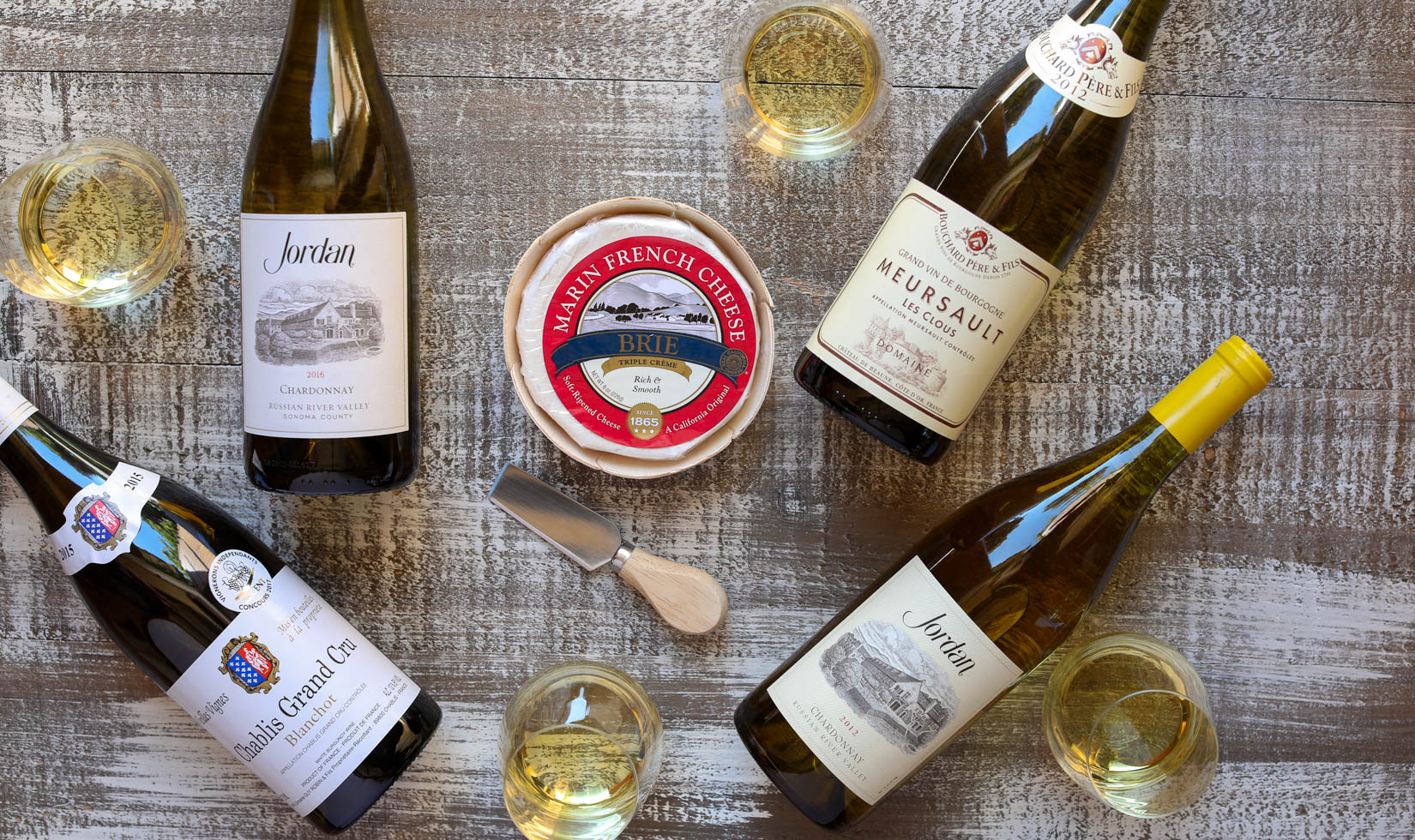
Marin French “Supreme” (triple-crème)
Description: Rich, creamy, buttery, and cream-like with a gentle hint of salt on the rind.
2016, 2012 Jordan Chardonnay: With both wines, the cheese created a very pleasant buttery finish yet not overpowering. Just right.
2015 Chablis: One taster loved the mineral-like sensation she got from this combination. So too the smooth textural interplay – medium-bodied cheese, medium-bodied wine.
2012 Meursault: For some of the same reasons as the 2015 Chablis, we really liked this wine and cheese combination. In particular, the mineral component really stood out. We got a stone-like sensation from the wine, which teased out a little earthiness in the cheese, particularly when eaten with the rind.
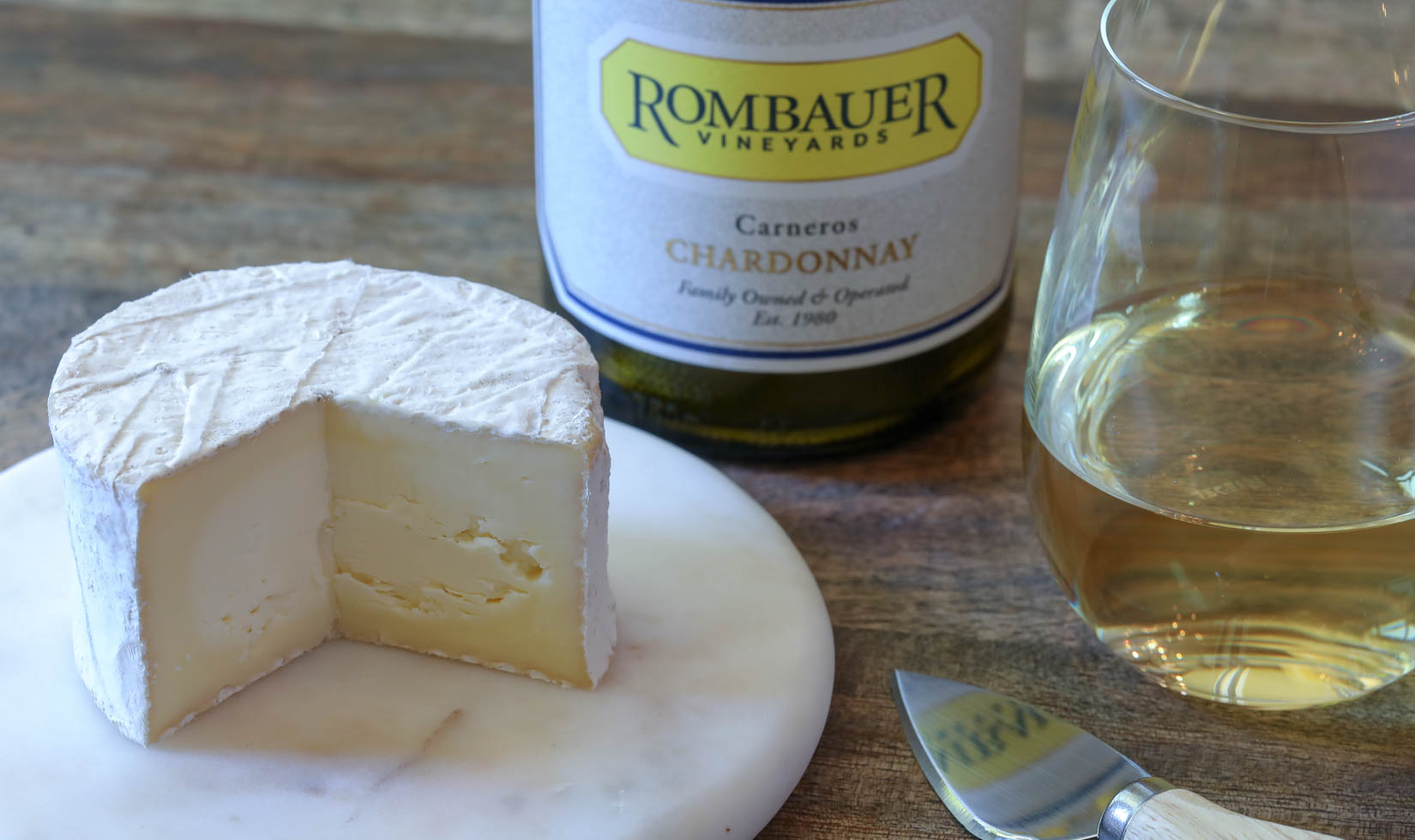
Nettle Meadow Kunik (Thurman, NY; pasteurized goat’s milk and cow cream)
Description: A combination of goat’s milk and cow cream means rich and tangy, both. When very ripe, it becomes almost spoonable. Also at that riper stage, however, the rind gets a bit stronger. That can make the pairings a little less enjoyable.
2016 Rombauer Chardonnay: This combination proved our theory that a wine that seems sweeter on the palate because of the ripe fruit and oak influences will seem even more so in the presence of many cheeses. In this case, that sweet sensation wasn’t at all unpleasant. Again, the textures of both the cheese and wine interplayed very nicely, and the strength of the rind along with the richness meant for a very nice chardonnay cheese pairing.
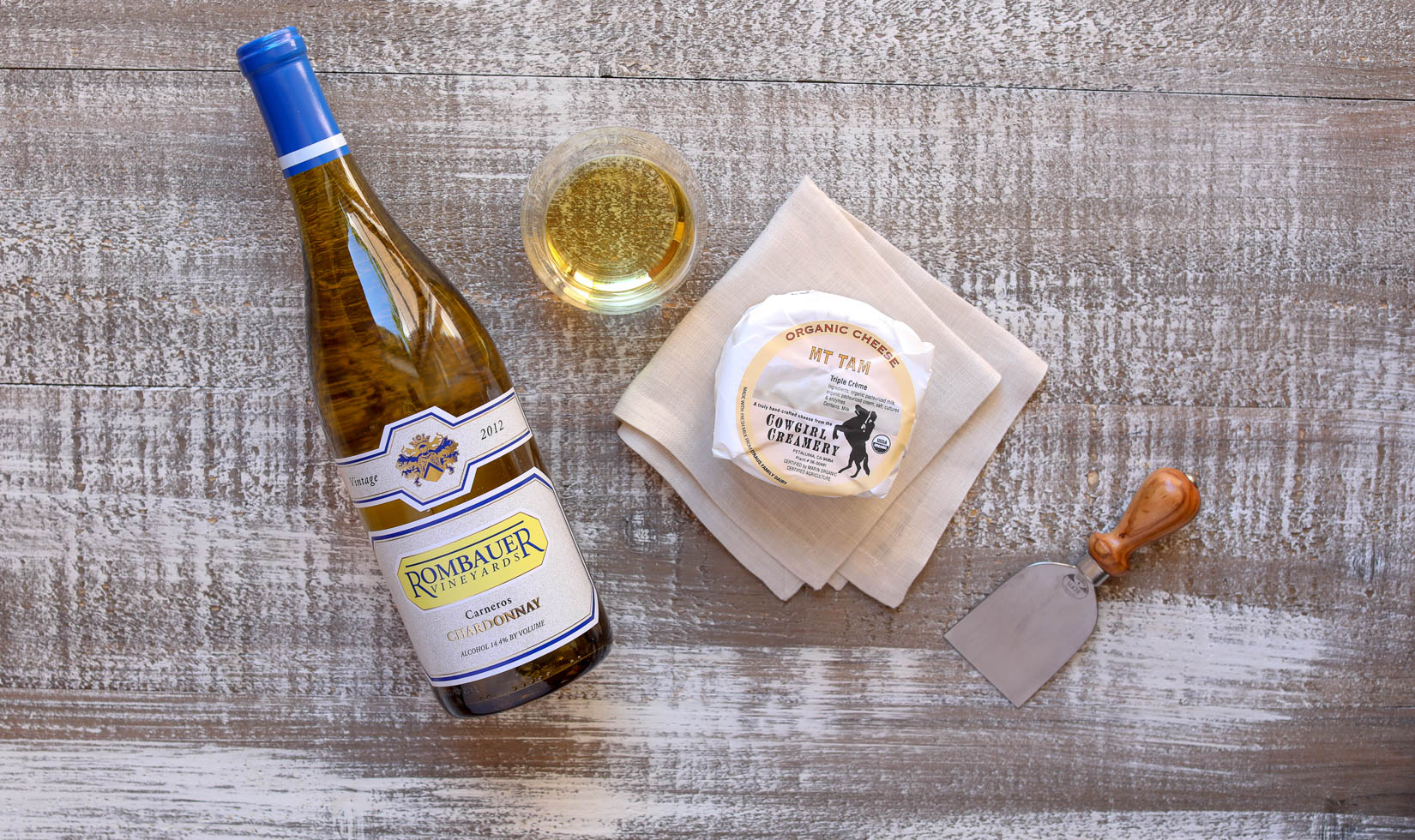
Cowgirl Creamery Mt. Tam (Petaluma, CA; pasteurized organic cow’s milk and cow cream)
Description: Think salted butter enrobed in cream and maybe a sprinkle or two of dried mushroom for good measure. Good stuff! Unlike other triple-crèmes, this cheese has a semi-firm texture at its core with a softer cream line under the rind.
2012 Rombauer Chardonnay: It’s no accident that a mouth-filling cheese like Mt. Tam would find harmony with a wine whose dominant characteristics are tropical and vanilla-y notes, a little coconut, and maybe a hint of dried apricot. Why? Because the cream in the cheese comes off as slightly sweet on the palate and the texture of the cheese is as rich as that of the wine. Sweet-meet-sweet; mouthfilling-meet-mouthfilling.
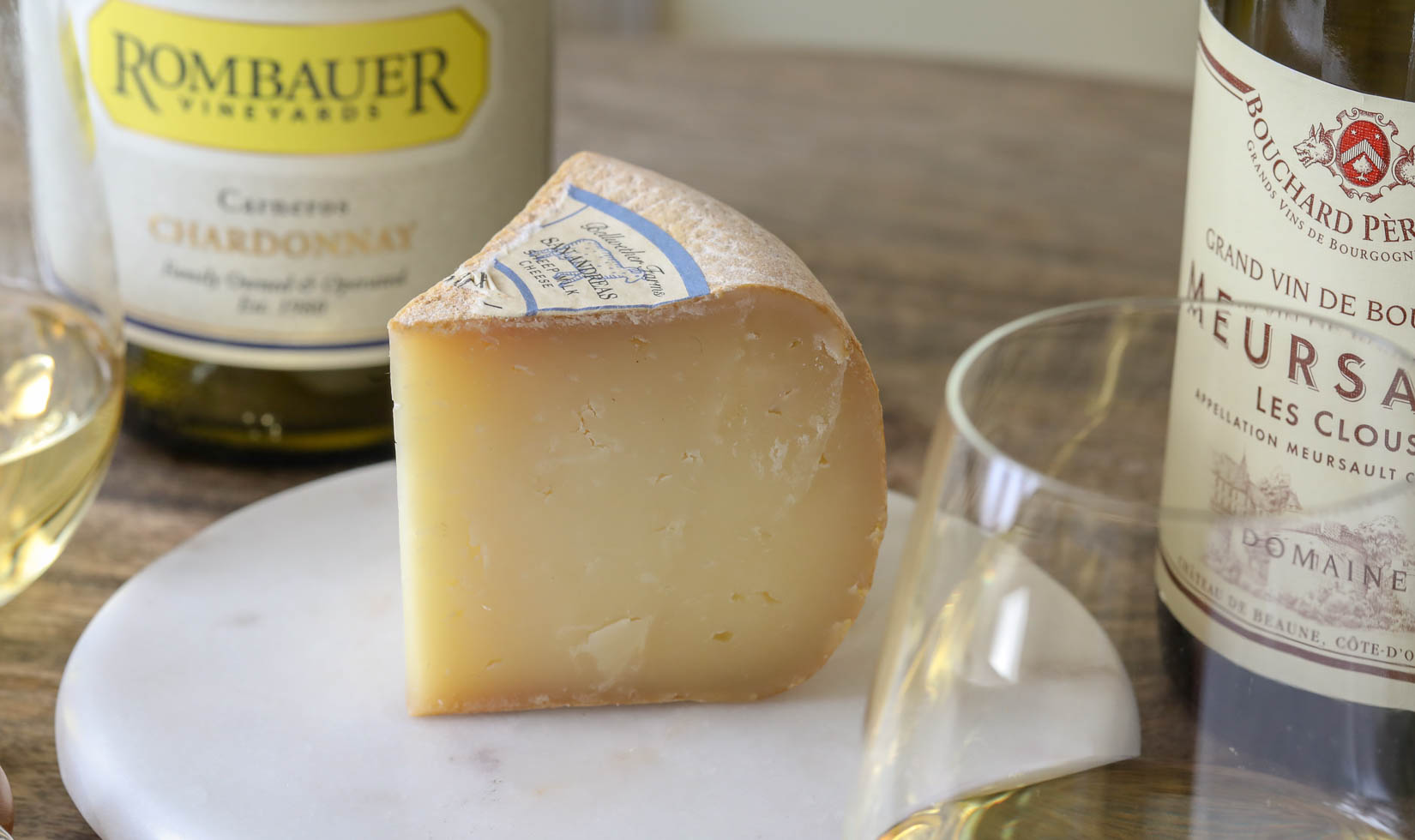
Bellwether Farms “San Andreas” (Petaluma, CA; pasteurized sheep’s milk)
Description: This cheese falls in the semi-hard category, which means it’s ready to slice and melt or eat right from a cheese board. It’s mild, buttery, very smooth, and a bit tangy on the finish.
2012 Meursault: Once again, we were drawn to texture. The cheese and wine made each other seem creamier. The wine did bring out a hint of sheepiness in the cheese, and the cheese accentuated the wine’s acidity, but overall the complexity and flavors of the pairing made it very enjoyable.
2016 Rombauer: This chardonnay cheese pairing managed to rein in this wine’s oak and sweetness, which didn’t dumb the wine down; it just brought out other equally pleasant characteristics in the wine.
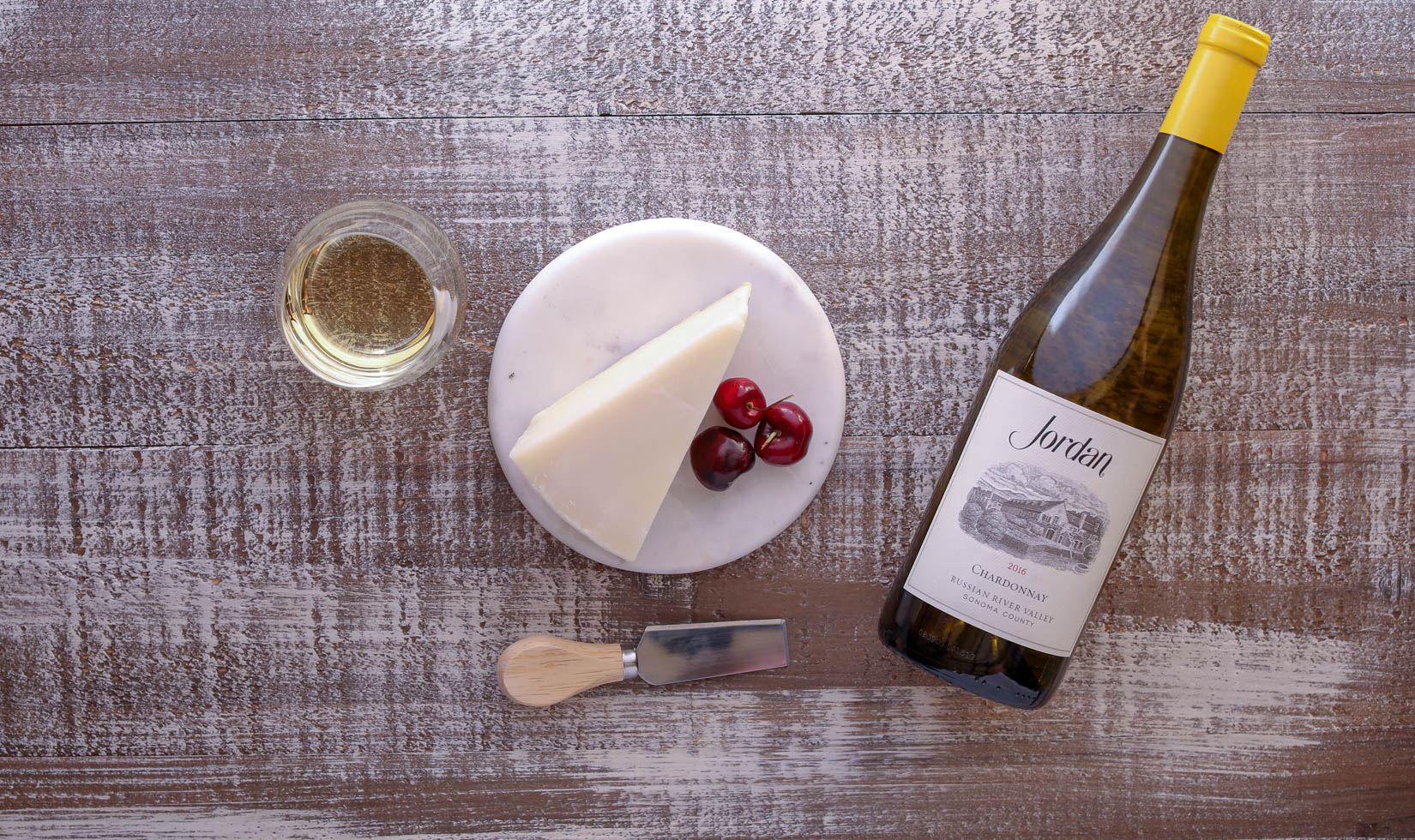
Cypress Grove “Lamb Chopper” (Arcata, CA; pasteurized sheep’s milk)
Description: Think caramel, butter, and salt and you’ll get an idea of what this dreamy semi-hard gouda-style cheese tastes like.
2016 Jordan Chardonnay: Perhaps it was the perception of sweetness in the cheese, but whatever the case, it made this wine’s finish last a long time. It also gave the finish a citrusy note. Nothing not to like!
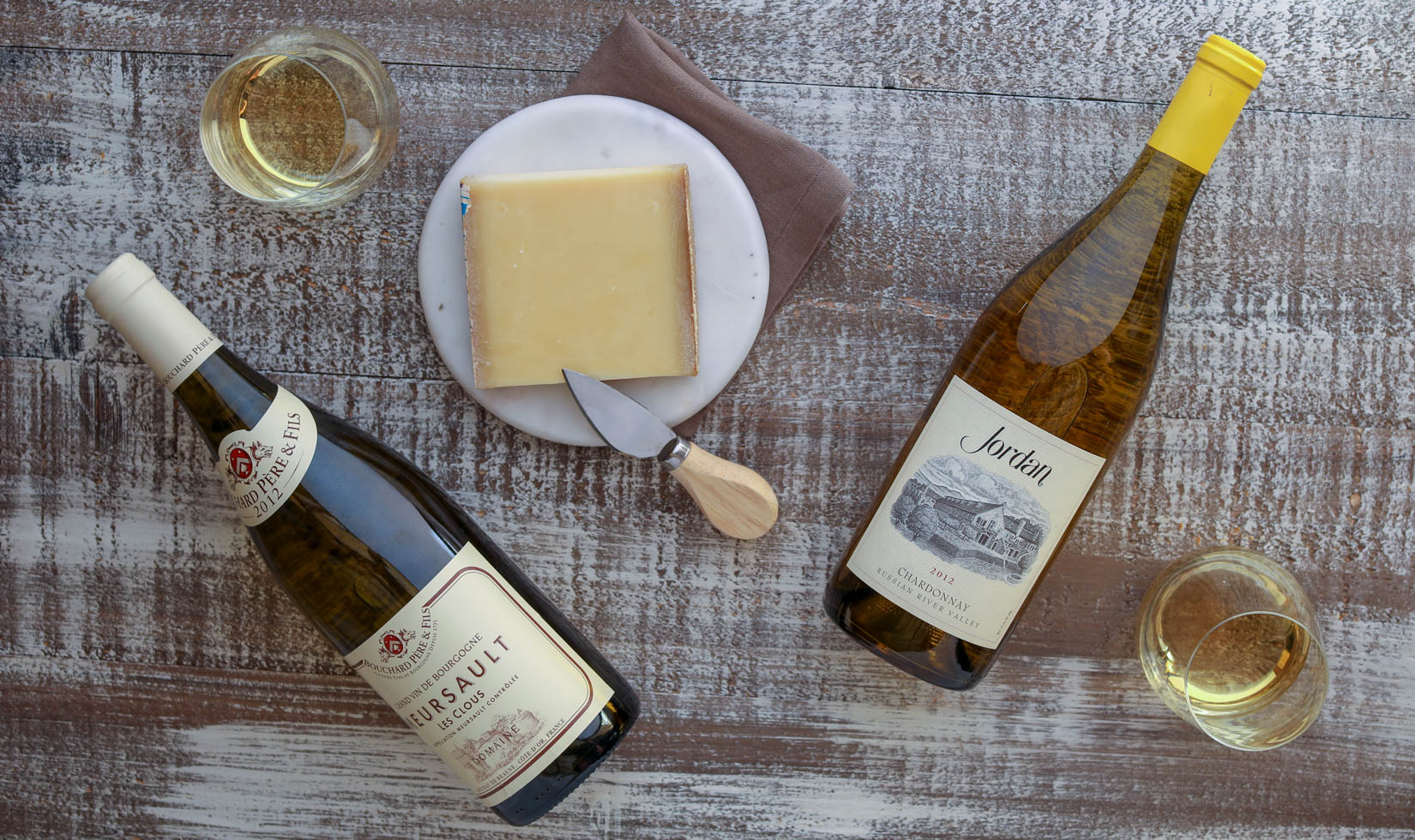
Comté (Jura region, France; aged in the caves of Marcel Petite)
Description: A semi-hard cheese with a smattering of crunchy protein crystals. Depending on its age and the farm from which the milk has come, Comté takes on all kinds of flavors. The one in our tasting was aged around 14 months, which means it had flavors like caramelized onions, toasted nuts, brown butter, and moderate salt.
2012 Jordan Chardonnay: This was one of those perfect chardonnay cheese pairings, where the duo performs magic on the dance floor together. The oak structure of the wine stood up to the toast-like component in the cheese, and the fruit-like characteristic of the cheese teased out the same characteristic in the wine.
2012 Meursault: It might stand to reason that a white Burgundy would work with Comté since they come from neighboring regions. Whatever the case, these two are a nice combination because the older-vintage wine, though still youthful, has the mineral component that a complex cheese like Comté responds well to.
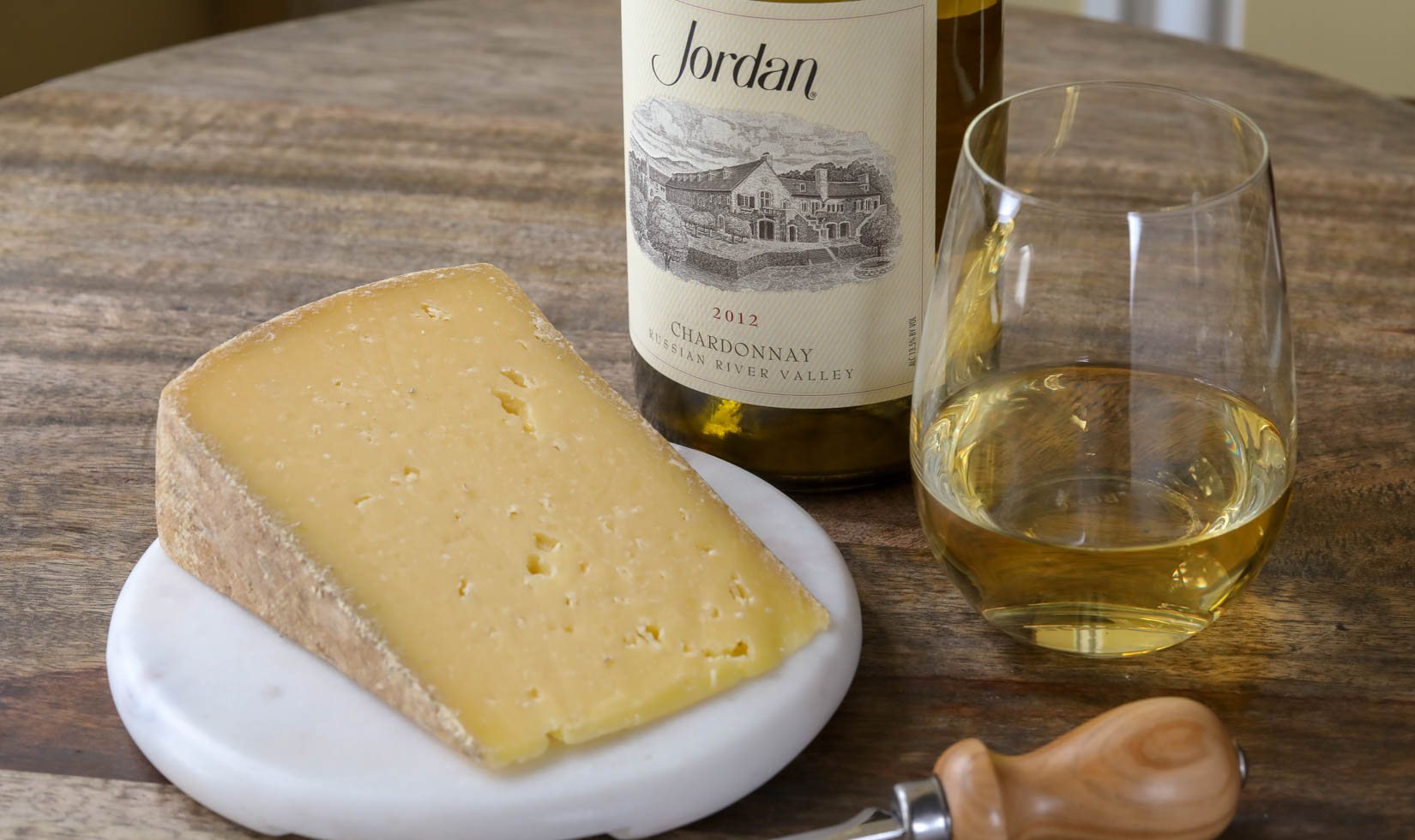
Valley Ford Cheese Co. “Estero Gold Reserve” (Valley Ford, CA; unpasteurized cow’s milk)
Description: This Italian table cheese (made in northern California) combines flavors of a mild parmesan, butter, and a very pleasant tang on the finish. To some, it might also seem a bit cheddar-like in its savoryness.
2012 Jordan Chardonnay: For better and, well, for better, this wine brought out the nuttiness in the cheese. Nothing wrong with that! Otherwise, we concluded that this cheese was probably meant for a red wine or perhaps a floral white.
Plan Your Own Chardonnay & Cheese Tasting
It turns out that an ideal chardonnay cheese pairing can arrive with many different companions. It’s just a matter of tasting and determining what combinations appeal most to you. With that in mind, we recommend gathering your friends together, along with a few styles and vintages of chardonnay and cheese and create your own tasting. Don’t expect everyone to agree on the pairings, but in the end it’s about drinking great chardonnay, eating stellar cheeses, and being with friends. That’s a winning combination on which everyone can agree.
